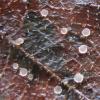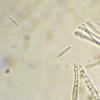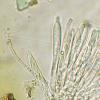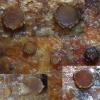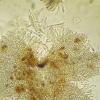
01-07-2008 00:16
Alain BRISSARDHello, bonjour à tous, J'ai encore besoin de vot

28-06-2008 18:56
 Nicolas VAN VOOREN
Nicolas VAN VOOREN
Chers collègues, Je pense que beaucoup d’entre

28-06-2008 17:21
Bonjour, Dans ma quête des mytilinidiacées je s
On Betula leaves
Marja Pennanen,
20-05-2010 08:42
these are about 0,3-0,7 mm wide and seems to be specific about substrate. At that damp place there were other leaves, but not these on them.
Marja Pennanen,
20-05-2010 08:45
Miguel Ángel Ribes,
20-05-2010 09:30

Re:On Betula leaves
It seems a Calycellina
Miguel,
Miguel,
Marja Pennanen,
20-05-2010 10:37
Re:On Betula leaves
Hello,
thanks.
Maybe Calycellina leucella...
Marja
thanks.
Maybe Calycellina leucella...
Marja
Miguel Ángel Ribes,
20-05-2010 10:57

Re:On Betula leaves
I do not know, I only have this experience, with Calycellina albida, identified by Zotto:
http://www.micobotanicajaen.com/Revista/Articulos/MARibesR/Aportaciones011/Calycellina%20albida%20011108%2098.pdf
Miguel,
http://www.micobotanicajaen.com/Revista/Articulos/MARibesR/Aportaciones011/Calycellina%20albida%20011108%2098.pdf
Miguel,
Marja Pennanen,
20-05-2010 11:19
Re:On Betula leaves
Hello Miquel,
I think, that C. leucella will do.
Actually I saw even longer spores, when I had a smaller magnification. Just could'n find them with bigger. Also asci may be longer.
I found these last spring, too and couldn't determine them. So I'm glad to get a species for them. They seem to be quite common at the region, where I found them: at my home, when I was yonger. It is my favorite place for searching fungi :)
Marja
I think, that C. leucella will do.
Actually I saw even longer spores, when I had a smaller magnification. Just could'n find them with bigger. Also asci may be longer.
I found these last spring, too and couldn't determine them. So I'm glad to get a species for them. They seem to be quite common at the region, where I found them: at my home, when I was yonger. It is my favorite place for searching fungi :)
Marja
Hans-Otto Baral,
20-05-2010 12:52

Re:On Betula leaves
Hi Marja & Miguel
I am not quite sure with this identification.Could you have a look on the exterior of the excipulum? Without that you can make mistakes between families!
I was dealing today also with a species on Betula leaves, which I presently compare with Pyrenopeziza betulicola. Enrique and several others made photos of the latter, but these look macroscopically different from mine which resembles more a Naevioideae. But they could fit to yours, though being more grey. I imagine that your find belongs to P. betulicola. The margin of your apos look a bit crenulate, maybe yours are also erumpent from beneath the epidermis. Microscypha monticola is perhaps the same species or a very close relative (on Salix leaves).
Here a photo by Ingo Wagner
Zotto
I am not quite sure with this identification.Could you have a look on the exterior of the excipulum? Without that you can make mistakes between families!
I was dealing today also with a species on Betula leaves, which I presently compare with Pyrenopeziza betulicola. Enrique and several others made photos of the latter, but these look macroscopically different from mine which resembles more a Naevioideae. But they could fit to yours, though being more grey. I imagine that your find belongs to P. betulicola. The margin of your apos look a bit crenulate, maybe yours are also erumpent from beneath the epidermis. Microscypha monticola is perhaps the same species or a very close relative (on Salix leaves).
Here a photo by Ingo Wagner
Zotto
Marja Pennanen,
20-05-2010 13:11
Hans-Otto Baral,
20-05-2010 13:48

Re:On Betula leaves
So it is a t. angularis. Calycellina also differs in having refractive vacuoles (VBs) in the paraphyses which yours apparently does not have.
Zotto
Zotto



